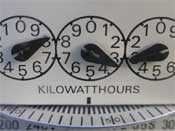The gist:
As Sightline Institute details in its Cascadia Scorecard, Cascadia’s energy system, long among its greatest strengths, has become one of its greatest vulnerabilities.
The details:
Fortunately, the same transition to a decentralized, resilient, and self-reliant energy infrastructure that can protect the region from harm can also generate thousands of new jobs, help restore the region’s natural heritage, and breathe new life into farm communities.
Here are a few of the emerging clean-energy trends that Cascadia could adopt to move toward a more secure-and profitable-energy future:
Clean, efficient transportation:
An efficient vehicle fleet sends fewer dollars out of the region and fewer pollutants into the atmosphere; it also buffers the region against pipeline disruption and oil price hikes by decreasing dependence on any single source of fuel.
- Clean-car standards: A key first step is for the Northwest states to commit to the stronger California-style vehicle emission standards for carbon dioxide already adopted by eight US states. Phased in from 2009 to 2016, clean-car standards would trim petroleum use in new vehicles by as much as 30 percent while increasing vehicle choices for consumers and reducing pollutants.
Washington and Oregon adopted clean-car standards in 2005. British Columbia’s residents could push the federal government to keep its commitment to ambitious emissions standards that would ensure a 25-percent drop in emissions per mile by 2010.
- Ultra-fuel-efficient vehicles: Clean-car standards will help drive the vehicle industry to develop advanced hybrid engines and ultralight but ultrasafe vehicle designs, which can eventually yield at least a doubling of fuel economy.
The National Research Council (NRC) has concluded that over 10 to 15 years, fuel economy could rise from an average of 27 miles per gallon to 41 miles per gallon, costing somewhere between $2,350 and $3,050 extra per vehicle, a cost that would pay for itself twice over in fuel savings during the life of the vehicle.
The Northwest already leads in manufacturing efficient, ultralight vehicles: Boeing’s next generation jet, the 787 (formerly known as the 7E7) will be the most fuel-efficient airplane in the sky by at least 20 percent, partly thanks to the company’s wholesale embrace of advanced, light-but-strong carbon-fiber polymers.Other local transportation manufacturers could use better aerodynamics, improved engines, and ultralight materials to increase fuel economy.
- Alternative fuels: One quick-maturing alternative fuel is cellulose ethanol, made from crop and forest residues, which could meet at least 5 percent and possibly more than 20 percent of the Northwest’s current gasoline demand.
It also may prove an economic boost to the rural Northwest. The Canadian firm Iogen is hoping to build a 50-million-gallon-a-year facility in Idaho to spin wheat straw into motor fuels that would likely spend $30 million a year on wheat.
And although still a decade off, hydrogen fuel cells-emissions-free and versatile-are now regarded in many circles as the dream fuel for both transportation and distributed power generation
Energy efficiency:
Energy-efficiency measures could be by far the biggest, cheapest source of new energy.
- Incentives for utilities: Utilities are not like other companies. Their profits are dictated by state utility regulators, based on complicated formulas. Since profits rise in direct proportion to sales, investments in improving efficiency can drain away profits. By “decoupling” sales from earnings, utility regulators can write efficiency and security into utilities’ bottom lines and turn them into vanguards of clean energy.
NW Natural, a Portland-based gas company, is the only Northwest utility that’s decoupled utility rates, but Puget Sound Power and Light (now Puget Sound Energy) operated under a decoupling rule from 1991 to 1996 that helped turn it from a laggard to a leader in energy efficiency. In its first decoupled year, the company’s efficiency programs saved almost as much electricity as they had saved during the three previous years combined.
- Demand-response programs: Utilities in Cascadia can invest in “demand response” systems that allow utilities to temporarily turn off certain power-using devices on the consumers’ side of the meter, typically at businesses that agree to cut back in exchange for cheaper rates.
- Smart-grid tools: Electronic tools can take demand response to another level, creating a “smart grid” that allows millions of electricity-using and -generating devices to adjust their operation to real-time grid conditions. If demand and prices soar, for example, preprogrammed thermostats would ease up. Pacific Northwest National Laboratory in Richland, Washington, has already been developing this technology and putting it to use.
- Energy-saving technologies: New energy-saving technologies keep emerging more quickly than they can be deployed, and are being put to use every day in homes and businesses around Cascadia.
Examples include cheap, versatile, compact-fluorescent lamps; light-emitting-diode (LED) exit signs that use 5 percent as much power as incandescent bulbs; more-frugal DC converters in the region’s roughly 100 million TVs, VCRs, and credit-card machines; and rooftop cooling units that are smart enough to circulate air from the outdoors when the temperature is right rather than continuing to pump machine-chilled air.
Consumer incentives:
Policies that encourage energy efficiency represent the cheapest, most profitable, and least polluting strategy.
- Feebates: A systemic innovation with great potential is point-of-purchase incentives called feebates. Feebates are graduated fees charged to the buyers of less-efficient products that in turn fund graduated rebates given to the buyers of more-efficient ones.
The more efficient the car or other energy-using device, the smaller the fee-or the bigger the rebate. Feebates keep efficiency snowballing: the feebates reset themselves each year at the average energy efficiency of new models.








